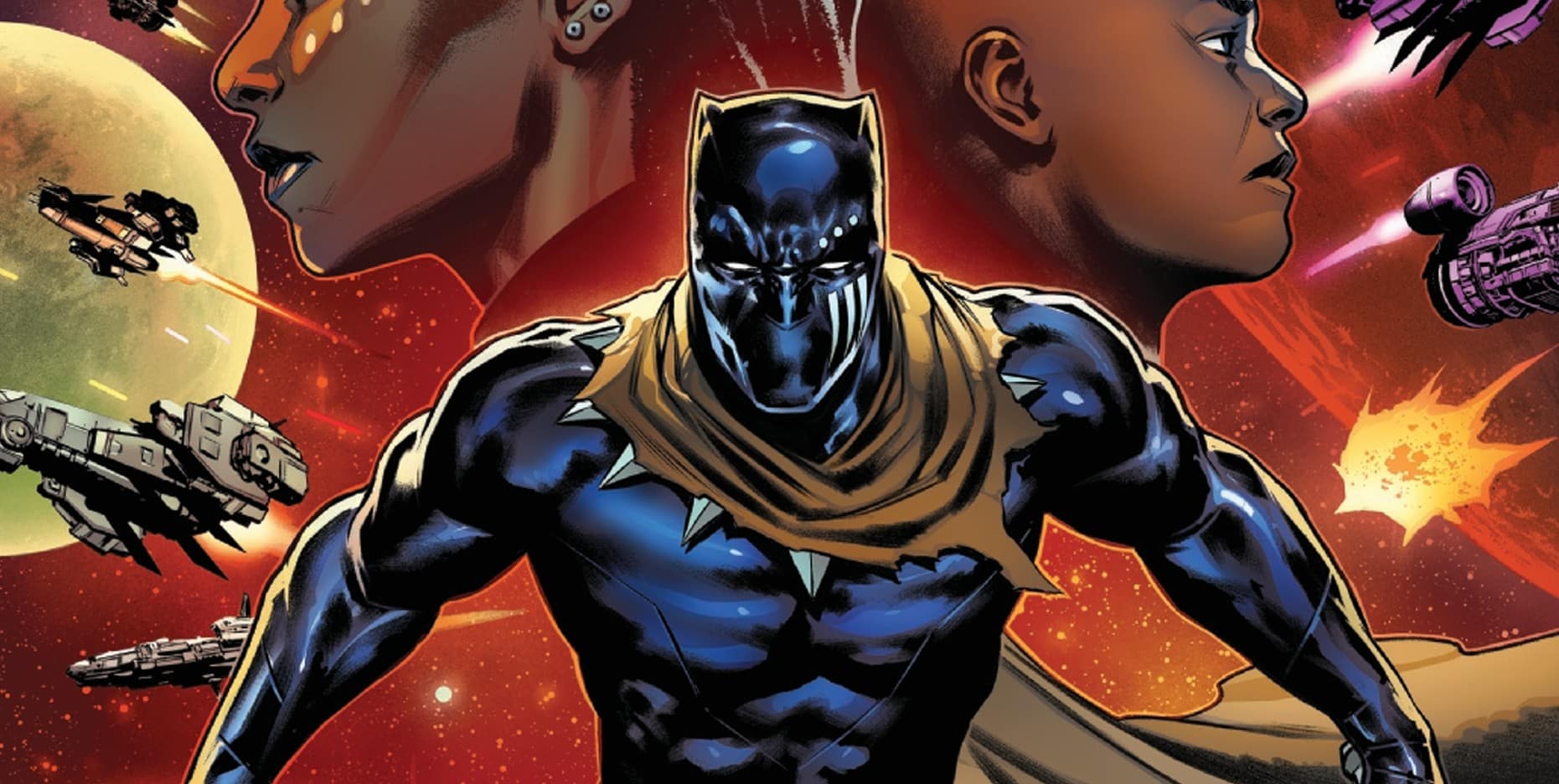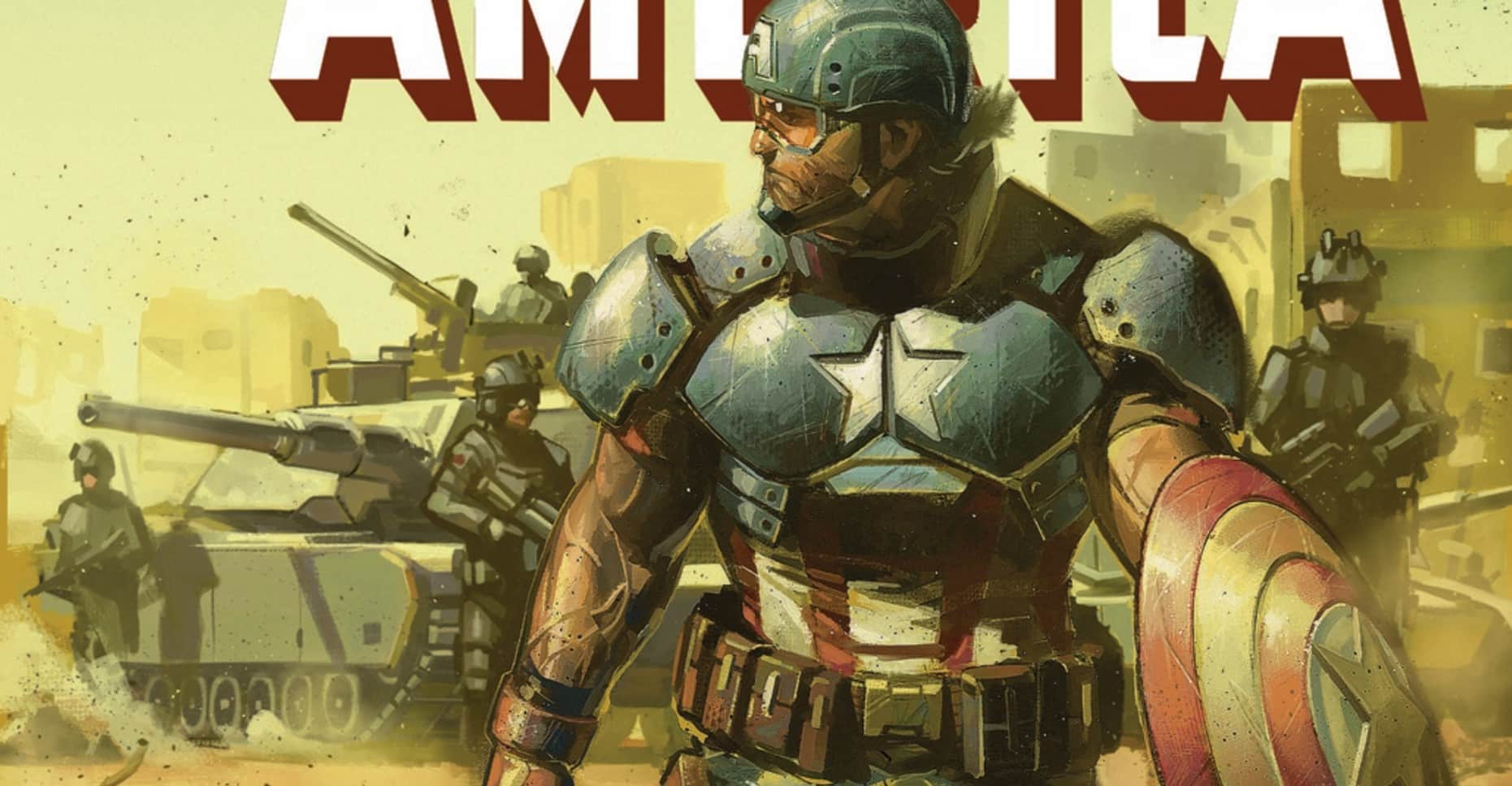Hello friends and readers, it’s time for a little bit of Marvel Minutiae this week. Our esteemed boss Zack Jenkins is getting into Venom #26 and the start of Venom Beyond, Andrea Ayres ponders over Spider-Woman #2, and Tony Thornley starts off Empyre tie-ins with Fantastic Four #21.
Venom #26
I think it’s fair to say Donny Cates and I have different tastes. I am not one of his “Devil’s AdvoCATES”. I think his best work is far and away God’s Country, a slow and thoughtful tale that’s more about a family relationship than a badass, god killing, sword. I’m an odd choice to be covering the latest arc of his popular Venom run. What can I say? It’s good to expand your horizons.
What I find most interesting about this issue is how many elements here I generally enjoy. Cates is crafting a massive plot with multiple threads between Knull and Dylan and The Maker all intersecting. There is a real human connection in Eddie’s relationship with his son, and his tentative trust in the Avengers. Series artist Ryan Stegman has been putting out next level work, and Iban Coello is giving a strong performance as a fill-in. I understand why people go wild for this.
At the same time, there is so much here that I just can’t stand. There’s an obsession with the worst elements of the Ultimate line. A tendency to value “badass” designs over actual character development. There’s the fact that the only time a woman has spoken in the last six issues has been to babysit Dylan or call Eddie hot. I don’t understand why people go wild for this.
So we’re left with something of a mixed bag aren’t we? Venom #26 is the start of a new arc, part of the march towards December’s “epic” King In Black. It introduces a new original character for Hasbro to add to an eventual Legends series. It brings back Earth-1610. It pulls Eddie off the table while Knull makes his way to the planet. If you’ve been enjoying Cates’ career defining turn on Venom, you’re not going to stop now. If you’ve been wondering when people will realize this has been twenty-six issues of the same immaterial thing, you’re going to be wondering for a long time.
Spider-Woman #2
SPIDER-WOMAN #2 by writer Karla Pacheco and artist Pere Pérez sees Jessica Drew discovering the reason behind her mystery illness readers are introduced to at the end of issue #1. Hint: it has to do with the woman featured on the cover art by Jung-Geun Yoon, the daughter of Otto Vermis. Drew’s illness is pretty damn serious but despite its severity SW #2 fails to spin a convicinging web.
Octavia Vermis, the daughter of HYDRA commander Otto Vermis is introduced to readers near the end of issue #2 as the main threat to Drew. Drew is already suffering from the adverse effects of having had her blood stripped of the protections placed by her father by Michael Marchand in a last ditch attempt to save his daughter Rebecca. You’ll remember Rebecca from issue #1 as the mega rich 16-year old whose party Drew attends. Alas, It wouldn’t be a mainstream superhero comic without Vermis fighting to avenge her deceased father. Drew and Vermis miss no time becoming entangled in a fight that feels like it would be better served between people no longer living.
There’s a callousness with the way Pacheco writes SPIDER-WOMAN and it’s hard for me to shake. I don’t mind evil characters. I don’t mind well-placed zingers or characters with past trauma who are trying to work through it. I do mind when it’s done in a way that feels throw-away. Just like I mind that Jessica Drew has a child, we know she has a child, but the child seems to only exist to make us feel something emotional for Drew. The child is a prop, we are meant to care more about Drew because she is a mother. It’s one of my least favorite superhero-comic tropes. Lucky for you dear human flesh reading this wee-review we also get a Grade A-prime look at one of other least favorite superhero-comic tropes in issue #2.
It happens when we’re finally introduced to Octavia, the main nemesis of this series. Octavia wastes no time reminding Drew (brainwashed by Otto when she was younger) that she used to know her father in a, you know, biblical sense.
Massive sigh.
It’s crude and meant to be triggering but it’s also unnecessary. Much like a few lines from issue #1, remember when Drew threatens to throw that annoying 16-year old boy overboard by the dick? The lines are meant to shock. How could she say that?! Wow something BAD must be happening! This isn’t like Jessica Drew at all. In SW#2, the reader is meant to have a similar response; Vermis must be real BAD. Instead of taking the time to develop Octavia’s evilness on her own, Pacheco opts for the quick fix of evil by proxy or osmosis. Whatever you want to call it. It relies on the evil deeds of her father, which the reader knows about and uses the call out of those deeds as a way to get the reader to despise Octavia the same way we despised her father.
What ends up making the issue salvageable is the art by Pérez and colors by Frank D’Armata. The action sequences readers are treated to in the later part of issue #2 (especially page 17) make the most out of this creative team, which includes lettering by Travis Lanham. Sure, I’ll continue reading to see how this story develops but I do so with trepidation that we’re going to devolve into a series of motherhood superhero cliches.
Fantastic Four #21
I am a mark for goofy and unexpected crossovers. So if you tell me that Wolverine, Spider-Man, Franklin and Valeria are going to be a substitute Fantastic Four, then I’m in. You add Empyre to the mix, and I’m already preordering the issue.
Dan Slott, Paco Medina, and Sean Izaakse (with color art by Marcio Menyz, Erick Arciniega, and letters by Joe Caramagna) put together a fun tie-in issue to Empyre as the Fantastic Four are drawn into the larger conflict. Focusing on the kids and using a substitute Four is a smart move, and Slott gets Spidey.
The conflict with the Richards kids and their two new “siblings” (AKA the Kree and Skrull children they rescued in Empyre F4 #0) is fun, and it doesn’t feel forced. Bringing in Peter Parker and Logan to babysit is probably the best choice. And Sky and Alicia continue to be highlights of the overall run.
It’s not a perfect issue though. There is some incredibly cheesy and campy dialogue (just look at Jo-Venn and N’Kalla’s dialogue up there). Plus Slott doesn’t quite have a handle on how to write Wolverine- he’s more than just gruff, angry and stabby, which is how he’s written here.
Overall- this is a fun bit of fluff. Whether it’s more than that will be up to the next couple issues, especially considering the incredibly interesting villains teased throughout the issue.








